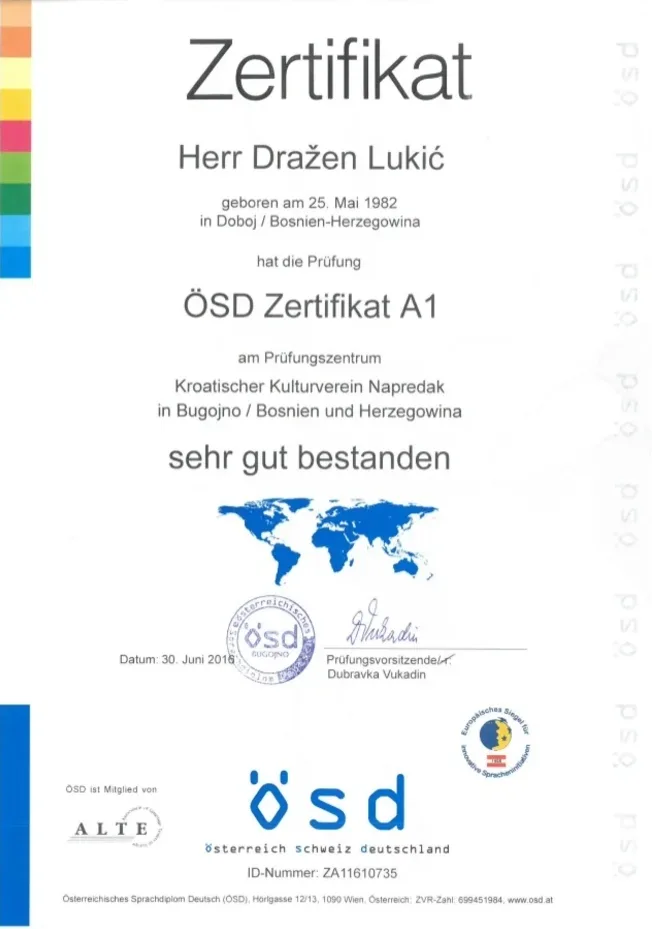Comprehending the ÖSD Certificate: Your Gateway to German Proficiency
In a significantly globalized world, proficiency in multiple languages is an important possession. For those interested in the German language, the ÖSD (Österreichisches Sprachdiplom) certificate stands apart as a recognized certification. This short article explores what the ÖSD certificate is, its significance, the structure of the exams, preparation ideas, and answers to regularly asked questions.
What is the ÖSD Certificate?
The ÖSD certificate is a main language certificate released by the Österreichisches Sprachdiplom Deutsch, or the Austrian Language Diploma in German. It examines the language proficiency of non-native speakers and sticks to the Common European Framework of Reference for Languages (CEFR). The ÖSD licenses language abilities ranging from A1 (novice) to C2 (proficient), covering four essential competencies: reading, composing, listening, and speaking.
Significance of the ÖSD Certificate
Getting an ÖSD certificate holds significance for different factors:
Educational Opportunities: Many universities and educational institutions in German-speaking countries require proof of German language efficiency for admission. The ÖSD certificate functions as legitimate proof of a prospect's language abilities.
Employment Prospects: In a competitive task market, an acknowledged language certificate can boost a candidate's employability, especially in functions requiring German as a primary language.

Migration Requirements: Some immigration processes in German-speaking countries necessitate language efficiency certificates. The ÖSD is widely accepted by various authorities, making it a vital property for those relocating to Austria or Germany.
Structured Learning: Preparing for the ÖSD certificate motivates students to develop a well-rounded understanding of the language, helping in both scholastic and daily interaction.
Structure of the ÖSD Exam
The ÖSD certificate encompasses different levels of assessment, lining up with the CEFR. The assessment structure includes the following elements:
Levels Offered:
A1: Beginner
A2: Elementary
B1: Intermediate
B2: Upper Intermediate
C1: Advanced
C2: Proficient
Components of the Exam:
The ÖSD exams are designed to evaluate the following language skills:
Listening Comprehension: Candidates listen to audio excerpts and address concerns to demonstrate understanding.
Reading Comprehension: This involves reading passages and reacting to questions to reveal analysis and comprehension.
Writing: Test-takers engage in composed jobs, such as making up letters or essays, to show their capability to articulate thoughts on paper.
Speaking: In this section, candidates get involved in discussions or monologues, showcasing their spoken communication skills.
Exam Format:
Examinations can take various formats, consisting of:
Paper-based: Traditional evaluations carried out in individual at designated testing centers.
Computer-based: Digital assessments available in some places, providing flexibility and convenience.
Getting ready for the ÖSD Exam
Preparation for the ÖSD certificate needs a structured method. Here are some reliable techniques:
Setting Up a Study Plan:
Examine Your Level: Determine your present proficiency level through practice tests.
Set Goals: Establish clear, possible objectives for each language ability (listening, reading, writing, speaking).
Daily Practice: Allocate time each day for language research study and practice various skills to develop a thorough command of German.
Resources for Study:
Language Courses: Consider registering in language courses, either in-person or online, particularly designed for ÖSD preparation.
sprachzertifikat a1 and Workbooks: Utilize materials that align with the CEFR levels and cover all four proficiencies.
Online Platforms: Websites, apps, and forums offer interactive workouts and neighborhood assistance.
Test Exams: Familiarize yourself with the test format by experimenting sample questions and previous tests.
Engaging with German:
Immerse Yourself: Surround yourself with the language through music, movies, and podcasts.
Language Exchange: Partner with native speakers or classmates to practice conversational skills.
Sign Up With Study Groups: Collaborating with peers can promote a helpful knowing environment and improve motivation.
Regularly Asked Questions (FAQs).
1. For how long does the ÖSD certificate remain legitimate?
The ÖSD certificate does not have an expiration date, but prospects are recommended to update their skills periodically, specifically for expert or scholastic functions.
2. Where can I take the ÖSD exam?
The ÖSD examinations are administered at various certified examination centers worldwide. A list of areas can usually be discovered on the main ÖSD site.
3. Just how much does the ÖSD exam cost?
Exam costs differ by area and level. It is recommended to examine with local screening centers for precise pricing.
4. Can I retake the ÖSD exam if I do not pass?
Yes, prospects can retake the exam as often times as essential to attain their preferred efficiency level.
5. Are there particular research study materials recommended for the ÖSD certificate?
While no main materials are mandated, it is beneficial to utilize textbooks customized to language proficiency tests and carry out practice tests.
Conclusion.
The ÖSD certificate serves as a reputable benchmark of German language efficiency, opening doors to academic, expert, and immigration opportunities. With a well-structured preparation strategy, devoted practice, and the right resources, aspiring candidates can enhance their language abilities and embark on an effective journey in mastering the German language. Whether for profession improvement or individual enrichment, the ÖSD certificate represents a significant action towards becoming skilled in German.
